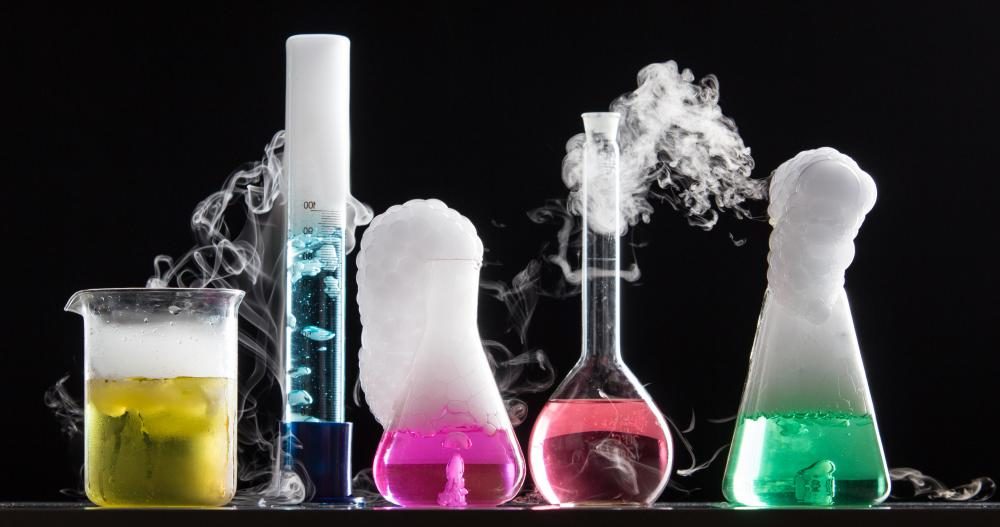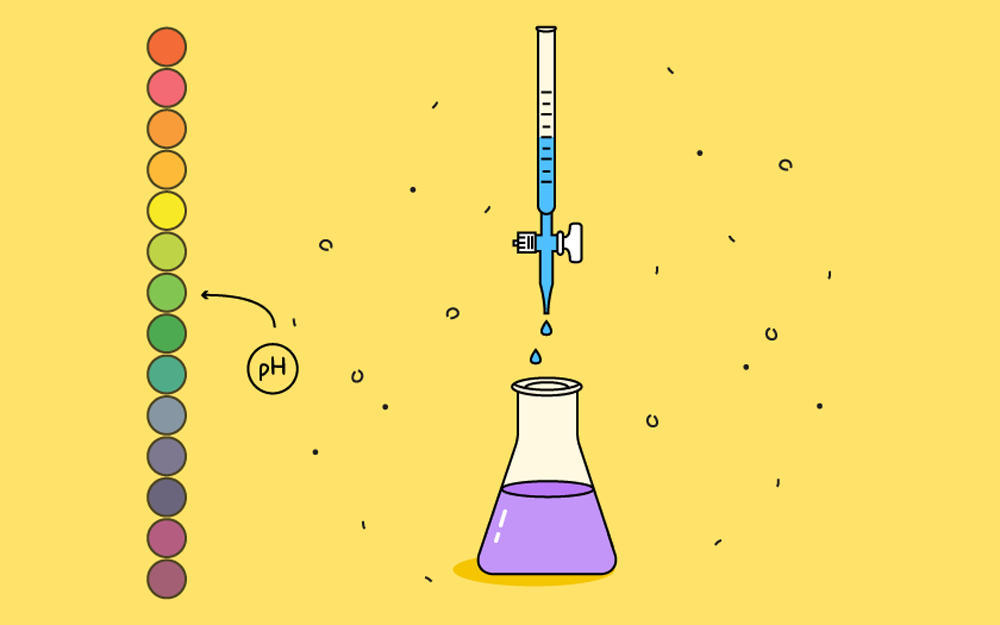Back to: CHEMISTRY SS2
Welcome to Class !!
We are eager to have you join us !!
In today’s Chemistry class, We will be learning about Acid-Base Reactions. We hope you enjoy the class!

CONTENT
- Preparation of Standard Solutions.
- Indicators
- Calculations based on Acid-Base Titration.
TITRATION
There are two types of quantitative analysis namely: volumetric and gravimetric analysis. Volumetric analysis is based on volume measurement while gravimetric analysis involves direct mass measurement.
Volumetric analysis is carried art using Titration. In a titration, a standard solution (one of known concentration must be used to react with a solution of the unknown of concentration)
PREPARATION OF A STANDARD SOLUTION
A standard solution is a solution of which the concentration is known. A standard solution is prepared by weighing a pure solute, for instance, and dissolving it in a suitable solvent, usually water, and making up the solution to a definite volume in a volumetric flask.
For instance, a solution known to contain exactly 10.6g of anhydrous sodium trioxocarbonate (IV), Na2CO3, in 1 dm3 of the solution is a standard solution.
Preparation of 0.1mol/dm3 NaOH
40g NaOH dissolved in 1 dm3 of the water gives 1.0mol/dm3 solution
Xg NaOH will be dissolved in 1 dm3 of water to give 0.1mol/dm3
= 4g
Therefore, 4g of sodium hydroxide pellet is measured, dissolved in water and made up to 1dm3 mark to obtain 0.1mol/dm3NaOH
Preparation of 0.1mol/dm3HCl
To prepare 0.1mol/dm3HCl, the dilution formula is used to determine the volume of the stock acid that will be measured and dissolved in water to obtain the desired concentration.
The dilution formula is C1V1 = C2V2
Where C1 = concentration of stock acid = 11.6mol/dm3 (for HCl)
V1 = volume of stock acid
C2 = desired concentration of acid = 0.1mol/dm3
V2 = volume of water = 1000cm3 (1dm3)
Thus, 8.6cm3 of the stock acid is measured using a measuring cylinder and added to water, then made up to 1dm3 to obtained 0.1 mol/dm3HCl.
EVALUATION
- Describe how to prepare 0.05mol/dm3 H2SO4
- List the apparatuses used during volumetric analysis(titration)
INDICATORS FOR ACID/BASE TITRATION
Acid-base indicators are dyes that change colour when according to the pH of the medium. The table below shows some titration and their suitable indicator:
Acid / base Indicator
Strong acid and strong base methyl orange or phenolphthalein
Strong acid and weak base methyl orange
Weak acid and strong base phenolphthalein
Weak acid and weak base No suitable indicator
CONCENTRATION
The concentration of a solution is the amount of solute in a given volume of the solution. It can be expressed as mol/dm3 or g/dm3.
Molar concentration
The molar concentration of a compound is one which contains one mole or the molar mass of the compound in 1dm3 of the solution. Unit of molar concentration is mol/dm3
Mass concentration
The mass concentration of a compound is the mass of the compound contained in 1 dm3 of solution. The unit is g/dm3
Relationship between Molar concentration and Mass concentration
Number of moles, n = C x V ……………………..(ii)
But, number of moles, n= m/M
Where M = molar mass and m = mass
Substituting n=m/M into …….(ii)
We have m/M = C x V
That is, m/V = C x M
But m/V = mass concentration
Therefore, mass concentration = molar concentration x molar mass = C x M
TITRATION REPORT
| Burette reading in (cm3) | Rough | 1st titration | 2nd titration | 3rd titration |
| Final burette reading | 23.40 | 23.20 | 28.20 | 34.10 |
| Initial burette reading | 0.00 | 10.00 | 05.00 | 11.00 |
| Volume of acid used (titre) | 23.40 | 23.20 | 23.20 | 23.10 |
= 23.17cm3
GENERAL EVALUATION/REVISION
- Which substance is added to the base during a titration experiment?
- What is the colour of methyl orange in a base?
- What is the point at which the titration experiment appears to complete called?
- State three differences between an electrolytic cell and electrochemical cell
- Calculate the standard e.m.f of a cell given that the e.m.f of Zn2+/Zn and Cu2+/Cu are -0.76V and +0.34V respectively
READING ASSIGNMENT: New School Chemistry SSS by O. Y. Ababio (6th edition) pages 165-168
WEEKEND ASSIGNMENT
SECTION A: Write the correct option ONLY
- The indicator used when titrating a weak acid against a strong base is A. methyl orange B. phenolphthalein C. methyl red D. any indicator
- The colour of phenolphthalein in acids is A. blue B. red C.colourless D. yellow
- Which of the following formulae is direct for amount n? A. n=C/p B. n=M/m C. n=C x V D. n=C x m
- The mass concentration of a substance can be expressed as A. mass/density B. molar concentration/molar mass C. mass/volume D. number of moles x volume
- At the endpoint, there is A. a colour change B. no change of colour C. decrease in mass D. an increase in mass
SECTION B
- Define the following terms (a) molar concentration (b) Equivalent point
- 160cm3 of distilled water is added to 40cm3 of 0.500mol/dm3 H2SO4 Determine the concentration of the diluted solution.
We have come to the end of this class. We do hope you enjoyed the class?
Should you have any further question, feel free to ask in the comment section below and trust us to respond as soon as possible.
In our next class, we will be learning about Hydrocarbons. We are very much eager to meet you there.


What are the precautions to be considered when carrying out acid-base titration experiments